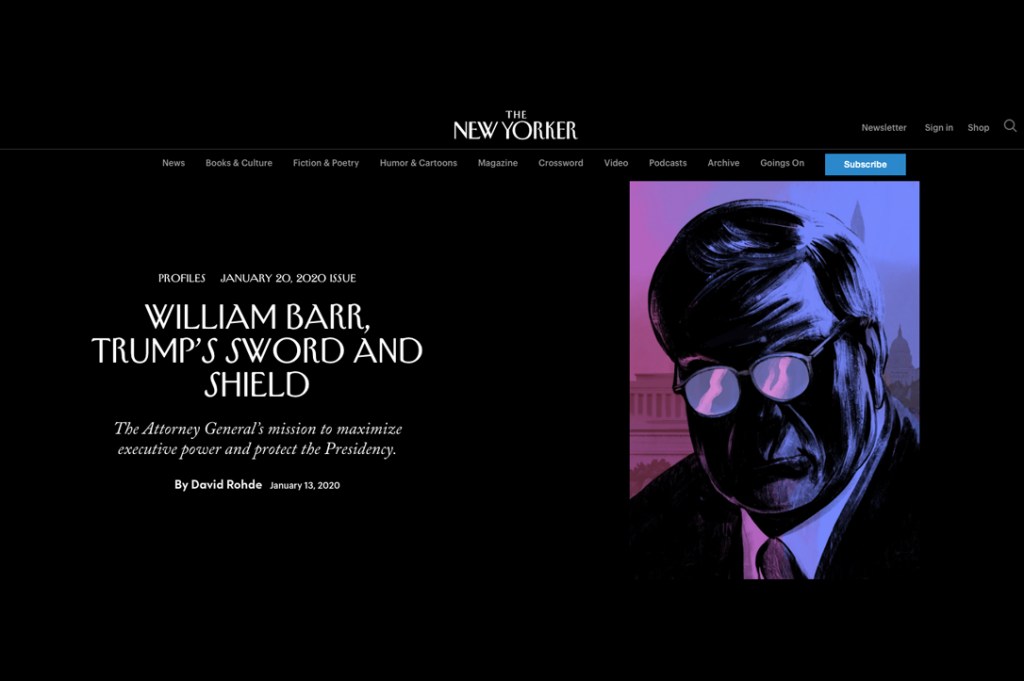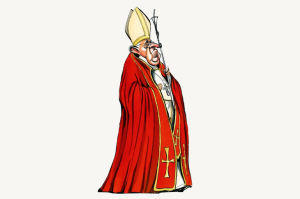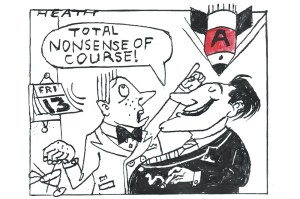Come on now, The New Yorker. Surely one of Conde Nast’s babies famous for their cartoons should be familiar with the other Nast. Thomas Nast was the father of American cartoon and the progenitor of the conspiratorial renditions of the feared papal insurrection. Nast’s nastiest cartoons were a passionate projection of his virulent anti-Catholic beliefs, hardly unusual in the 19th century among Protestants and ethnocentric nativists, until John F. Kennedy’s era ushered in an amnesia. The American River Ganges, Nast’s 1871 caricature of Catholic bishops as reptiles ominously wading and slithering to the New York shoreline, salivating with ravenous appetites to devour the Protestant schoolteacher and children, was published in Harper’s Weekly not once, but twice!Anti-Catholicism has played in the American sandbox for a long time. Today this manifests in a more palpable way to secular society, such as religious litmus tests for Catholic judicial nominees or pathologizing Catholic charity organizations such as the Knights of Columbus as tentacles of the Papal Octopus, the most famous anti-Catholic cartoon from the early 20th century. The latest example is The New Yorker’s profile of Attorney General Bill Barr, a practicing Catholic with alleged ties to ‘Opus Dei’, characterized by the magazine as worthy of secular skepticism. The New Yorker, in their defense, granted the Catholic organization an unintended benefit of the doubt that other publications such as The Nation didn’t when writing about them, characterizing it as extremist. The latter drew on outsider fantasies about the enigmatic group, describing it as some nefarious cabal or cult, while The New Yorker merely nudged the reader to plant a kernel of this implication in their heads. I’ve been attending the smoke-filled room that is a Catholic mass for most weekends of my life (literally smoke-filled at the Traditional Latin Mass and Byzantine mass). What is routine and central to my life, however, I have seen inspire the bizarre or curious imaginations of non-Catholics (and non-Orthodox) — transubstantiation, confession, and especially the Vicar of Christ. Perhaps the 2018 Met Gala theme ‘Heavenly Bodies: Fashion and the Catholic Imagination’ was an expression of such imagination in the profane and popular sphere in a relatively benign sense. Rihanna’s appropriation of the Pope’s mitre, repurposed for paparazzi with the same ornate jewels that Nast had illustrated into his vicious reptiles’ jaws, was a fashionable version of the popular fascination toward Rome, and a fixation with a perceived power and majesty.  While the aesthetics are easily appropriated and accepted in elite spheres (which isn’t a bad thing), there’s reason to wonder whether when a Catholic such as Amy Coney Barrett is nominated for the Supreme Court, it’ll be masks off for congressional Democrats opposing the nomination as well as those filling op-ed pages about it. In 2017, Sen. Dianne Feinstein grilled Coney Barrett about her Catholic faith and remarked that ‘the dogma lives loudly with in you, and that’s a concern’ — if there was explicitly religious profiling during the short-list phase for Trump’s second Court pick, should the opportunity to fill a third opening with a justice similarly young and conservative occur, will the ersatz Papal Octopus be revived? There’s reason to believe that the characterizations of Catholics such as Coney Barrett and Barr thus far — The New Yorker’s illustration of Barr resembling a vintage Marvel comic villain — are only a taste of what’s possibly to come.
While the aesthetics are easily appropriated and accepted in elite spheres (which isn’t a bad thing), there’s reason to wonder whether when a Catholic such as Amy Coney Barrett is nominated for the Supreme Court, it’ll be masks off for congressional Democrats opposing the nomination as well as those filling op-ed pages about it. In 2017, Sen. Dianne Feinstein grilled Coney Barrett about her Catholic faith and remarked that ‘the dogma lives loudly with in you, and that’s a concern’ — if there was explicitly religious profiling during the short-list phase for Trump’s second Court pick, should the opportunity to fill a third opening with a justice similarly young and conservative occur, will the ersatz Papal Octopus be revived? There’s reason to believe that the characterizations of Catholics such as Coney Barrett and Barr thus far — The New Yorker’s illustration of Barr resembling a vintage Marvel comic villain — are only a taste of what’s possibly to come.
Bill Barr and the ersatz Papal Octopus
Anti-Catholicism is back in the American mainstream

The New Yorker’s spooky Bill Barr story
Come on now, The New Yorker. Surely one of Conde Nast’s babies famous for their cartoons should be familiar with the other Nast. Thomas Nast was the father of American cartoon and the progenitor of the conspiratorial renditions of the feared papal insurrection. Nast’s nastiest cartoons were a passionate projection of his virulent anti-Catholic beliefs, hardly unusual in the 19th century among Protestants and ethnocentric nativists, until John F. Kennedy’s era ushered in an amnesia. The American River Ganges, Nast’s 1871 caricature of Catholic bishops as reptiles ominously wading and slithering to the New York…

















